Biostratigraphy
Type of resources
Available actions
Topics
Keywords
Contact for the resource
Provided by
Years
Formats
Representation types
Update frequencies
Scale
-
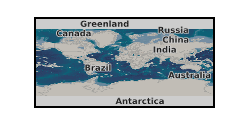
Results of shore-based micropaleontological analysis, summarizing planktonic foraminifera biostratigraphy at Site U1559A. IODP Hole U1559A located in the central South Atlantic (30°15.6335′S, 15°2.0942′W). Collected data allowed to identify slumped interval of older material present within much younger upper part of the local sedimentary sequence.
-
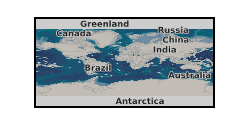
Data include geological logs and charts; letters, minutes & memos; notes; externally written reports; Internal reports; Research Reports; annotated publications, records and reports; and other miscellaneous documentation. Although some of the data go back to the first half of the 20th century (and rarely earlier), the bulk of the data refer to work carried out since about 1960. The data are filed under four subheadings: i. 1:50K sheet files (data relating to BGS mapping projects) for England & Wales, Scotland and Northern Ireland. ii. Offshore sheet files (data relating to BGS mapping projects) for the UK continental shelf and North Atlantic. iii. Offshore Quadrants (data relating to the hydrocarbons industry) (confidential). iv. Foreign biostratigraphy (in part confidential). v. General Palaeontology, Biostratigraphy & Taxonomy.
-
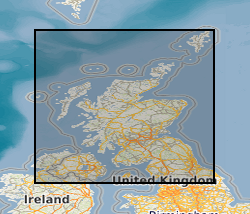
This dataset is an index of the Survey Collection of fossils for Scotland and Northern England. It is the digital equivalent of the analogue (card) index. The latter contains some 31k records, c.70% of which has been transcribed. The continually growing Survey Collection comprises about 450k samples (including nearly 30k specimens from the John Smith Collection) which are individually registered in c.150 leather bound volumes. The Oracle relational database BGS_FOSSLOC is a first step in ascertaining what registered fossil materials exist for certain areas, who collected them and when, their geographical and stratigraphical details, the type of collection (whether from boreholes or exposures), and any covering technical reports. It is also a pathway to an extensive and unique collection of paper graphic logs, some 18k of which record annotated information on fossil occurrences and assemblages at certain stratigraphical levels (particularly in the Carboniferous) in Scotland and Northern England.
-
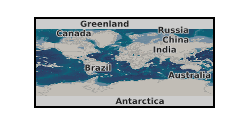
Interrelated specimens and records compiled over 150 years of palaeontological collecting and research. All associated paper data (registers, indexes of locality and storage, reports of conclusions).
-

Nannofossil biostratigraphy, 46x stable bulk carbonate stable isotope measurements (oxygen and carbon) and 71x % organic carbon and % carbonate measurements from between 1313.71 and 1326.82 mbsf at IODP Site U1480.
-
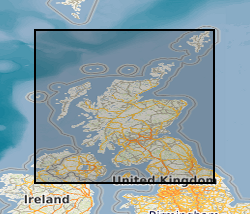
This dataset (GSE_REFERENCES) is a list of specimens held in the Type and Stratigraphical Collection of Scotland and Northern England, and the publications in which they are featured or illustrated. This database along with GSE_SPECIMENS (Index To The UK (North) Type And Stratigraphical Collection Of Fossils) and to some extent SMITH_GSE (Index To Specimens Transferred From The John Smith Collection To The UK (North) Type and Stratigraphical Collection) are the digital equivalents of the analogue card index (held in BGS Edinburgh).The latter contains c.16k records, of which perhaps 25% have now been transcribed. The MS Access database BGS_GSE_REFS presently contains 431 records (but does not include specimens from the John Smith Collection). This represents an unknown, but probably small, proportion of the Type and Stratigraphical Collection of Scotland and Northern England featured in publications. The database links with GSE_SPECIMENS, and can also provide species, authors and nomenclatural status. Many of the publications referred to are held in an extensive paper reprint collection.
-

Our proposed research is based on cores collected during the recent, and very successful, Integrated Ocean Drilling Program (IODP) Expedition 340. The aims of this expedition were to investigate the volcanism and landslide history of the Lesser Antilles volcanic arc, by collecting a number of cores offshore Montserrat and Martinique. As a shipboard planktic foraminifera (single celled calcareous plankton) biostratigrapher (dating sediment cores using the appearances and disappearances of fossil plankton), Deborah Wall-Palmer (proposed PDRA) has access to these cores during the one year moratorium period. Until IODP Exp. 340, the longest continuous record (~250,000 years) of volcanic activity on Montserrat was a 5.75 m core collected to the south-west of the island in 2002, CAR-MON 2. This core revealed a more extensive and complete record of volcanic activity than that available in terrestrial cores. The longest continuous sediment record collected during Exp. 340 extends this record considerably. At 139.4 m in length, Hole U1396C records events back to 4.5 million years ago. The majority of this Hole will undergo stratigraphic analysis at low resolution, which will be carried out by other Exp. 340 scientists (Andrew Fraass, Mohammed Aljahdali). The upper 7 m section of this Hole is estimated to span 300,000 years and is comparable to the time period recovered in sediments for Holes U1394A/B (0 to 125 cm) and U1395B (0 to 30 cm). Holes U1394A/B and U1395B were collected close to Montserrat, in the main path of eruptive material from the Soufriere Hills volcano and contain a high resolution, but interrupted record of volcanic eruptions and landslides. Our proposed research is to provide a high resolution (every 2000 yrs) age framework across the upper ~300,000 year sections of these three cores. This will be achieved by collecting specimens of the planktic foraminifera Globigerinoides ruber and analysing the stable oxygen isotope ratios contained within their calcium carbonate tests (shells). Oxygen isotope ratios provide information about the global ice volume and global climate, and the standard record can be identified world-wide. Correlation to this record can therefore be used to provide an age framework for sediments, which is more detailed than using the biostratigraphic range of species alone. Producing this age framework is essential for achieving the overall aims of Exp. 340 as it will be used, in collaboration with several other Exp. 340 scientists, to reconstruct the volcanic and landslide history of Montserrat. In addition to this, to ensure the conservative use of samples, some further work will be carried out on samples requested from the upper 7 m of Hole U1396C. This will assist in constructing the low resolution stable isotope and biostratigraphic framework for the remainder of this Hole. The majority of this work is being carried out by Andrew Fraass (University of Massachusetts) and Mohammed Aljahdali (Florida State University). We will analyse the upper 7 m of Hole U1396C, at low resolution, for stable oxygen isotopes of the benthic foraminifera Cibicidoides spp. and for planktic foraminifera datum species.
-
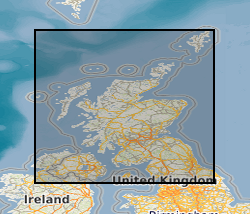
This dataset (GSE_SPECIMENS) is an index of the specimens and palaeontological slides held in the Type and Stratigraphical (T&S) Collection of Scotland and Northern England. This index along with GSE_REFERENCES (List Of Specimens From The UK (North) Type And Stratigraphical Collection And Related Publications) and to some extent SMITH_GSE (Index To Specimens Transferred From The John Smith Collection To The UK (North) Type and Stratigraphical Collection) are the digital equivalents of the analogue card index (held in BGS Edinburgh). The latter contains c.16k records, of which perhaps 25% have been transcribed. The sporadically growing T&S Collection (which is derived from the Survey Collection) comprises some 16k specimens. About 11k are housed at BGS Keyworth and c.5k remain at BGS Edinburgh. The specimens are individually registered in 5 leather bound volumes. These are held in BGS Keyworth, but equivalent information (microfilm and paper records) is held in BGS Edinburgh. For each specimen, the MS Access database MTD_GSE_SPECS provides a link with the Survey Collection, gives nomenclatural, taxonomical, geographical and stratigraphical information, an indication on where the fossil is housed, and any comments, perhaps on the state of preservation.
-
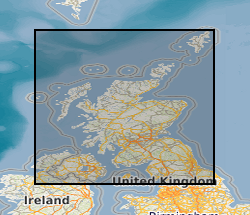
Stored in Murchison House, this dataset (FAUNGRAPHLOG_ED) is the BGS UK (North) collection of paper graphic logs from boreholes and measured natural sections, particularly in the Carboniferous of Scotland and northern England. Some 18000 of these records include hand written macrofossil occurrences and assemblages from certain (often subsequently interpreted) stratigraphical levels in the borehole or section. There is at present no separate index (either analogue or digital) to FAUNGRAPHLOG_ED but a pathway to it is FOSSLOC, the index to the Survey Collection of fossils from UK (North).
-
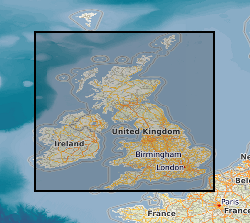
PALSLIDES_ED is the BGS Edinburgh Palaeontological Slides Collection. It comprises two registration series. The MIC (microfossils) series, which is added to sporadically, includes c.950 individually registered slides (each with up to 100 cells) of microfossils (mainly foraminifera and ostracods). The PS (Palaeontological thin Sections) registration series, which has not been added to since 1987, comprises 4202 fossil thin sections and mounted slides, and includes various donated collections. Both the MIC register (10 volumes) and PS register (2 volumes) record the locality of each slide and any previous registration numbers. Stratigraphic information may also be given. Taxonomic information is not complete. There is, at present, no separate index (either analogue or digital) to the dataset, but it is included in FOSSLOC4. GSE_SPECIMENS and SMITH_GSE include those slides and thin sections transferred to the Type and Stratigraphical Collection from the Survey and John Smith collections.
 NERC Data Catalogue Service
NERC Data Catalogue Service